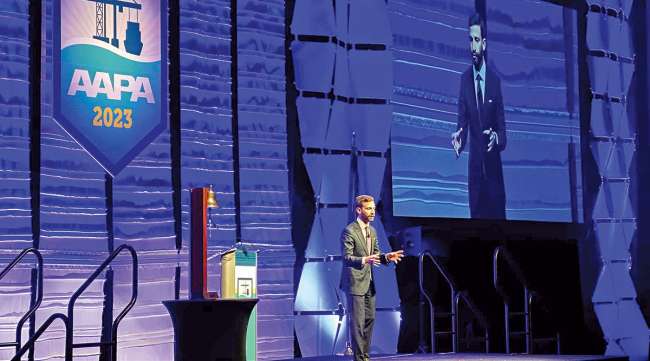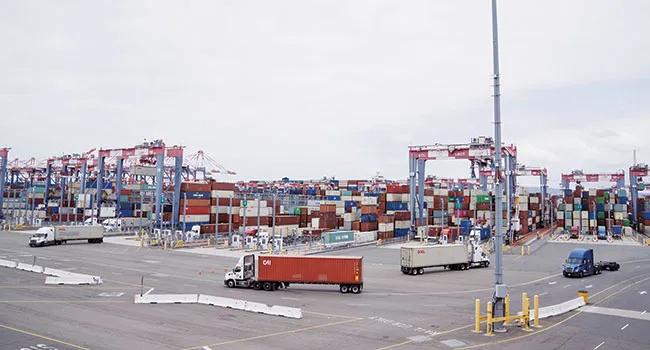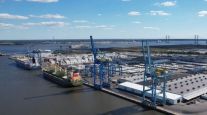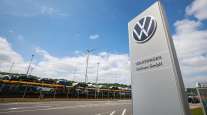Senior Reporter
Ports Consider Digitization Strategies to Track Cargo

[Stay on top of transportation news: Get TTNews in your inbox.]
AURORA, Colo. — Ports and shippers are exploring ambitious port digitization and tracking system projects that allow stakeholders across the supply chain to track cargo in real time from a departure port in Asia and across the Pacific Ocean, through a port of entry and finally onto a truck or railcar for delivery.
“We’re riding a newly formed crest of interest and dedication to ports, and now as we enter the next era of digitization and decarbonization, there is a lot more we want to accomplish,” said newly minted American Association of Port Authorities President Cary Davis, the group’s longtime government affairs vice president and former Capitol Hill staffer who took the reins from outgoing leader Chris Connor during the AAPA 2023 Annual Convention and Expo. The event was held at the Gaylord Rockies Resort & Convention Center from Oct. 22-25.
Davis, speaking exclusively with Transport Topics, stressed that stakeholders across the supply chain have the tools to make this level of transparency happen but must collaborate to bring the vision to reality. “Everyone has the digital platforms that in theory can track cargo, but they’re not talking to each other, and they’re not standardized,” he said.
But Davis stopped short of supporting a proposal from Federal Maritime Commission member Carl Bentzel called the Maritime Transportation Data Initiative, a one-size-fits-all technological approach through which all companies would enter their data to allow their individual shipments to be tracked. Davis warned that such an approach raises issues of privacy, cyber theft and access to proprietary business data, all of which he said would cause concern for users.
Carriers that do business at ports are also contending with governmental efforts to decarbonize and compel use of more zero-emission vehicles in the facilities, a movement that port leaders are still working through.
“We are spending a lot of time trying to figure out the realistic and prudent rate at which our system can decarbonize, and so many of those decisions are being made by the vessel operators who are building the ships with powertrains for alternative energy,” Davis said. “The Biden administration has dedicated a lot of money for infrastructure for decarbonization, and we are very bullish as these programs come on line, but it has to be done at a realistic rate, and it’s going to cost trillions of dollars to fully decarbonize the system over decades and decades.”

Trucks at the Port of Long Beach in California. It is moving quickly to electrify its day-to-day operations. (Eric Thayer/Bloomberg News)
The Port of Long Beach — one of the nation’s busiest ports — is undertaking one of the most aggressive positions to electrify its day-to-day operations and reduce overall emissions to meet future clear air rules from both the California government and U.S. Environmental Protection Agency.
“For me, this is a welcome challenge,” Port of Long Beach CEO Mario Cordero told Transport Topics. “If anything, the pandemic showed us there needs to be transformation. If you stay with the status quo, you get behind.”

Cordero
Cordero said since enacting the San Pedro Bay Ports Clean Air Action Plan with the adjacent Port of Los Angeles, the Port of Long Beach has replaced or updated 19% of its cargo handling equipment. While he acknowledged that fossil fuels will be needed for decades to come at the ports and in transportation, he believes its consumption will diminish yearly. Plus, he forecasts that the costs equation for diesel and gasoline will increase as the actual costs of carbon removal are factored into the price.
“This transformation is something that has to be done,” Cordero said. “The Port of Long Beach has a very strong record, and we will continue to do this.”
Davis emphasized that a collaborative approach will help ports navigate the regulatory challenges ahead.
“I get that ports compete with one another for cargo, but funding and policy are areas where the ports should not compete,” he said. Davis added that the pandemic and resulting supply chain disruptions demonstrated that ports, trucking, freight railroads, shipping lines and others must sometimes work together to break down silos that impede the flow of cargo.

Connor
Connor in farewell remarks praised port leaders and staff for the important work they do for the U.S. economy.
“Cargo never sleeps, and I admire the resilience and tenacity that port leaders and their teams have shown to keep goods moving even in the face of difficult circumstances,” he said.
Davis said the pandemic proved the essential nature of the nation’s ports and cited AAPA figures indicating that more than 25% of the nation’s annual economic activity is related to ports and the cargo they move. While activity has slowed since pandemic-era highs, facilities are standing strong, he said.
“The overall port volumes are down relative to 2021 and 2022, but they’re still on a modest growth path compared to pre-pandemic levels,” he said. “In terms of fluidity, things are pretty strong, and we’re doing really pretty well.”
Want more news? Listen to today's daily briefing below or go here for more info:




